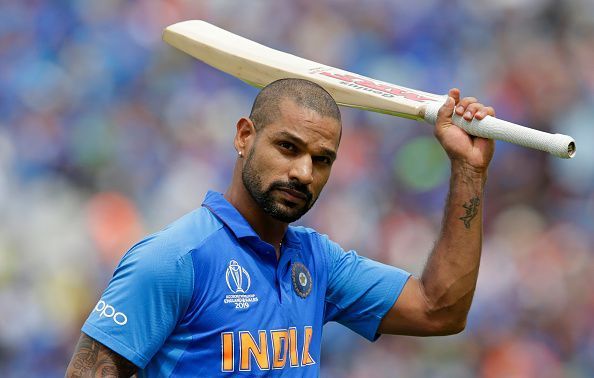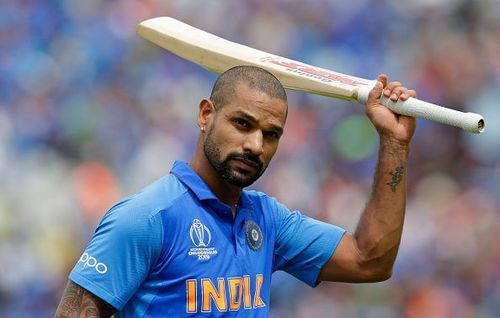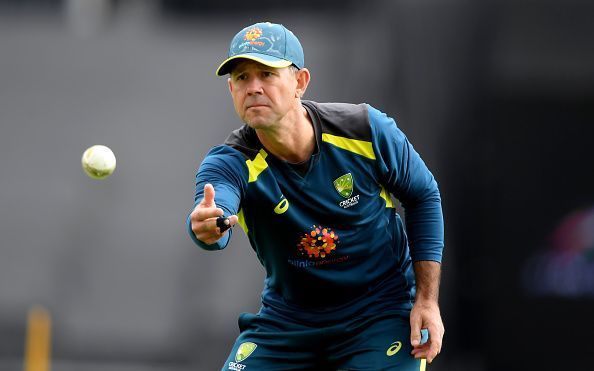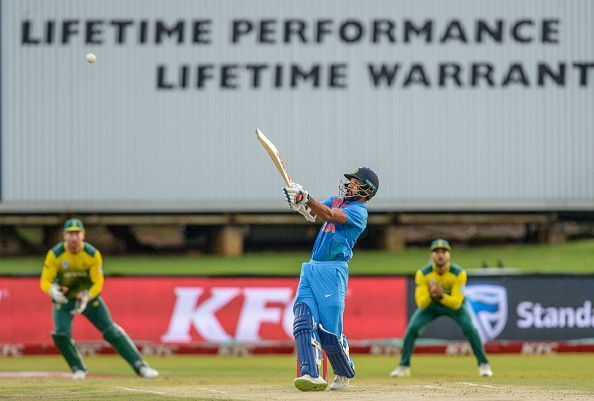
Why Shikhar Dhawan is a better T20 player than his stats suggest

Shikhar Dhawan’s place in the Indian T20I team has been under the scanner for a while now, as there is a perception going around that he doesn’t score as quickly at the top of the order in T20Is as required. KL Rahul’s emergence as a T20 opener in the IPL and Dhawan’s struggles in the recent T20I series against West Indies have only added fuel to that debate.
After failures in the Champions Trophy and the ODI World Cup in the last couple of years, India are gearing up for their next big-white ball assignment: the T20 World Cup which is going to take place in about 14 months’ time in Australia. So the selections in T20Is are top priority at the moment, which makes the debate around the second opener, who would potentially open with Rohit Sharma in the tournament Down Under, even more relevant.
Talking about Dhawan, if we have a look at his overall T20I stats, they tell us that the left-hander has scored 1337 runs in 53 games at an average of 27.29 and a strike rate of 129.55. These numbers might suggest to some people that Dhawan is an average T20 player, because you don’t want your opener to be striking below 135. The fact that his average is below 30 as well suggests that he is not scoring a lot of runs either.
You can accept a strike rate of below 135 from your opener only if he is batting through the innings and anchoring the innings. That would mean that while his strike rate would be a little low, his average would be high because he would be scoring more runs than anyone else, given the time he would be staying at the crease.
However, with Dhawan, that’s not the case either as his average is below 30 - as mentioned above.
Former Australian captain Ricky Ponting, who is now a cricket coach, has a very simple and interesting parameter to judge the capabilities of a player in T20 cricket. Ponting has not only coached Mumbai Indians to the title triumph in the IPL previously, but also guided the Delhi Capitals to the IPL playoffs earlier this year with a very young team. It’s probably safe to say that he knows a thing or two about the shortest format of the game.

As per Ponting, if you add the average and the strike rate of a player in T20 cricket and it crosses the 160 mark, it means the player is doing some sort of a job for the team. Either he is going hard at the opposition and making a short but defining impact on the game, or he is batting through the innings to allow others to play around him. But if the player is not crossing the 160 mark, he is below par.
Going by Ponting’s theory, if we add Dhawan’s average and strike rate in T20Is, it amounts to 156.84 - and he remains below the desired standard.
But that doesn’t give you the real picture. I have always been of the firm opinion that a player’s stats can’t be judged in black and white. Only a detailed analysis of the stats allows you to come to a conclusion about the player’s true capability in different conditions.
If we break down Dhawan’s T20I stats and see how he has gone about his business in Australia and South Africa, two countries where we get the bounciest of pitches, we will find that the 34-year old Delhi player is averaging 38 in Australia and striking at the rate of 168.14 per 100 balls. Meanwhile in South Africa, his average and strike rate are 47.67 and 153.76 respectively.

Now if we judge Dhawan on Ponting’s parameter in the Australian and South African conditions, or in simple words on bouncy pitches, he is well above the desired standard; the sum of his average and strike rate is above 200 in both the countries.
Why is that the case? If he is a good T20 player, he should score in all sorts of conditions, shouldn't he?
This would an absolutely be a valid argument in normal circumstances. But some players in cricket are conditions-oriented players, and Dhawan is one of them. Despite being born and brought up in India and having played all of his cricket in the country, Dhawan still doesn’t like slow pitches.
He is at his best when there is a little bit of pace in the track and the ball comes on to the bat nicely. He is not a driver of the ball. He waits for an opportunity to play the horizontal bat shots.
He likes to cut, he likes to pull and even when he is playing with a straight bat, he hits it on the up. Anything he plays through the covers is a punch most of the time, rather than a conventional drive.
In ODI cricket, Dhawan has decent numbers even on slow tracks because he can take his time to get accustomed to the slow nature of the pitch. But he doesn't have that allowance in T20 cricket where he has to get going straightaway; that’s why he struggles if the pitch is slow.
However, if the surface is true and he can trust the bounce of the pitch, there are very few players around the world who are as dangerous as him at the top of the order. The last time India toured Australia for a T20I series, Dhawan’s scores in the two innings that he played were 76 (42) and 41 (22), and he was declared the man of the series.
While Dhawan’s overall T20I stats suggest he falls in the category of mediocrity, he is actually a high quality player if the “conditions filter” is applied to those stats in the context of the next T20 World Cup venue. While deciding their opening pair for the grand occasion next year, India must not make a decision on Dhawan based on his “overall” T20I stats.